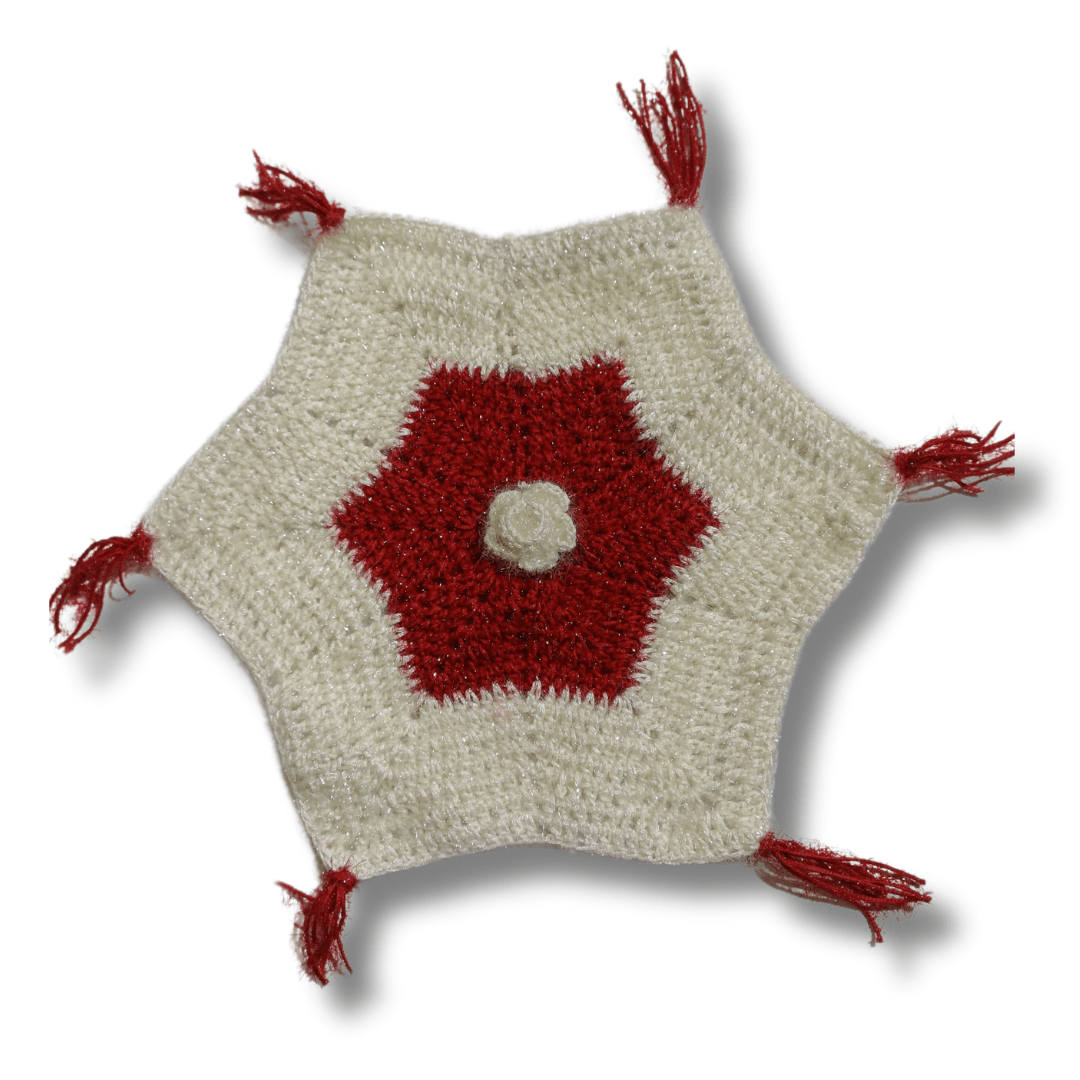

The tulsi vastra is an exquisite cloth specifically designed to cover plates in Maharashtrian tradition. Its purpose extends beyond mere functionality—it serves as a symbol of reverence, aesthetics, and cultural significance.
Design and Symbolism
Central Motif- At the heart of the tulsi vastra lies a vibrant red pentagonal shape. This central motif represents the sacred tulsi (holy basil) leaf, which holds immense importance in Hindu rituals.
The white circular center within the pentagon further emphasizes the purity associated with tulsi.
Color Palette- The main body of the cloth is cream-colored, signifying simplicity and purity.
Red accents adorn the corners, adding a touch of elegance. Red symbolizes auspiciousness and vitality.
Tassels- Each corner of the pentagon extends into delicate tassels. These tassels sway gracefully, enhancing the overall aesthetic.
The red tips of the tassels echo the color of the central motif, creating visual harmony.
Functionality
Plate Protection- The tulsi vastra serves a practical purpose by covering plates during meals. It shields food from dust, insects, and other external elements.
Families use it during festive occasions, religious ceremonies, and special gatherings.
Ceremonial Significance- When serving food, placing it on a tulsi vastra elevates the dining experience. It imparts a sense of sanctity and respect.
During religious rituals, the plate cover becomes a sacred offering.
Usage
Festivals and Pujas- Families use the tulsi vastra during festivals like Diwali, Ganesh Chaturthi, and other auspicious occasions.
Weddings and Celebrations- It graces the dining table during weddings, anniversaries, and other joyous events.
The tulsi vastra transcends its utilitarian purpose, becoming a cultural emblem that connects generations. Its intricate design, vibrant colors, and spiritual connotations make it an integral part of Maharashtrian heritage.